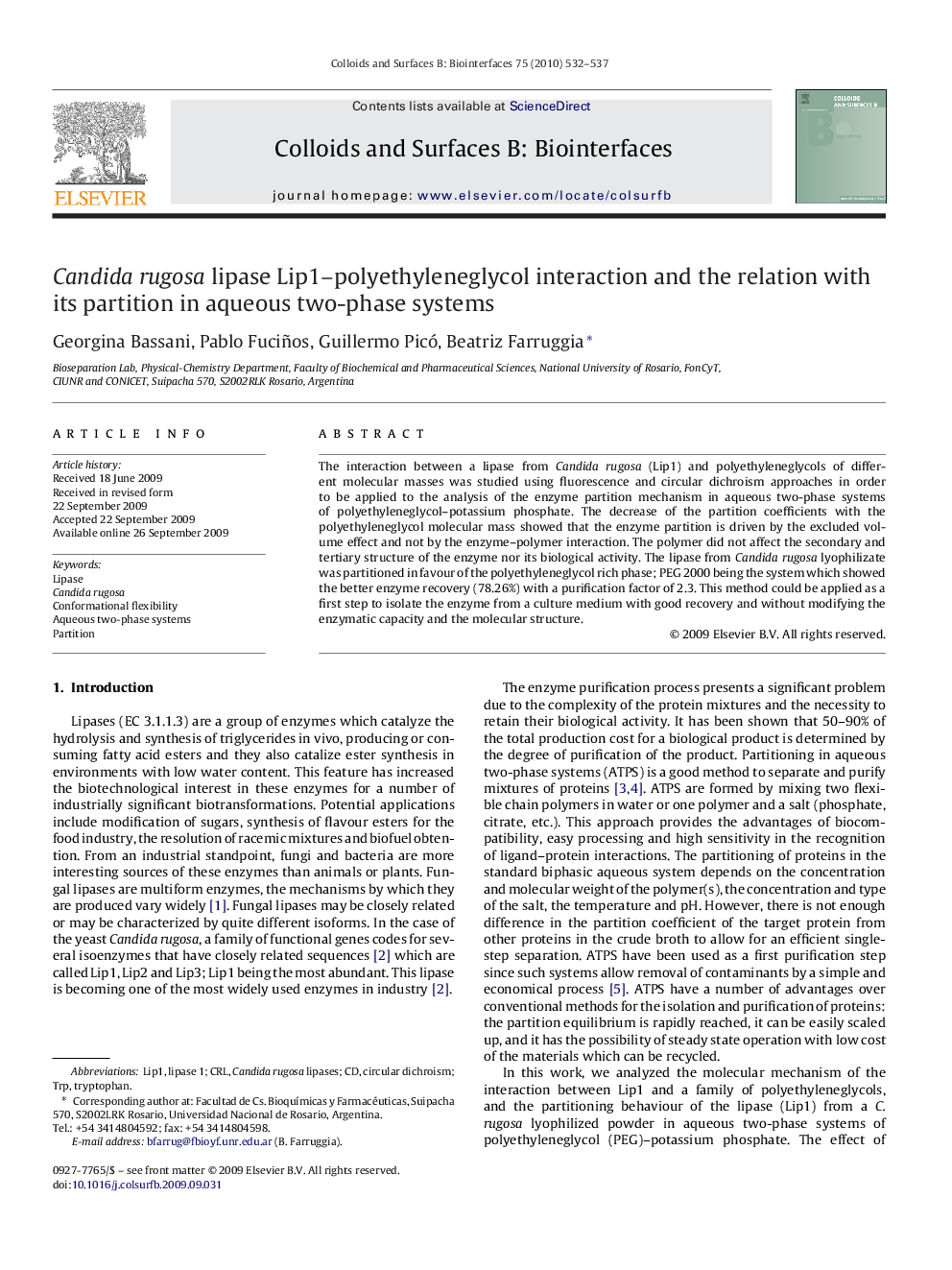| کد مقاله | کد نشریه | سال انتشار | مقاله انگلیسی | نسخه تمام متن |
|---|---|---|---|---|
| 601673 | 879950 | 2010 | 6 صفحه PDF | دانلود رایگان |

The interaction between a lipase from Candida rugosa (Lip1) and polyethyleneglycols of different molecular masses was studied using fluorescence and circular dichroism approaches in order to be applied to the analysis of the enzyme partition mechanism in aqueous two-phase systems of polyethyleneglycol–potassium phosphate. The decrease of the partition coefficients with the polyethyleneglycol molecular mass showed that the enzyme partition is driven by the excluded volume effect and not by the enzyme–polymer interaction. The polymer did not affect the secondary and tertiary structure of the enzyme nor its biological activity. The lipase from Candida rugosa lyophilizate was partitioned in favour of the polyethyleneglycol rich phase; PEG 2000 being the system which showed the better enzyme recovery (78.26%) with a purification factor of 2.3. This method could be applied as a first step to isolate the enzyme from a culture medium with good recovery and without modifying the enzymatic capacity and the molecular structure.
Journal: Colloids and Surfaces B: Biointerfaces - Volume 75, Issue 2, 1 February 2010, Pages 532–537